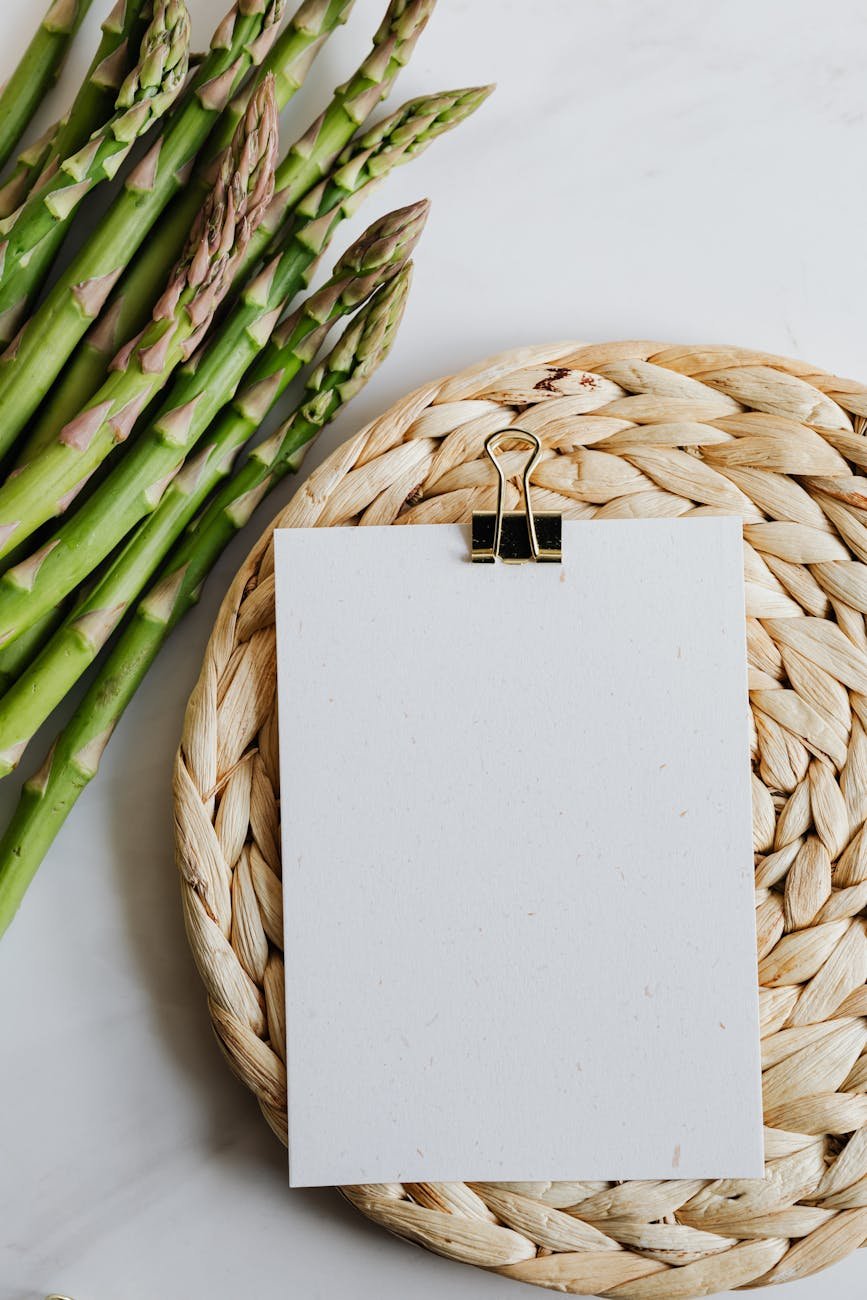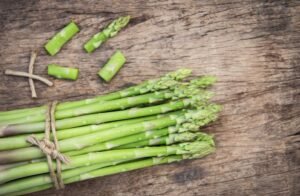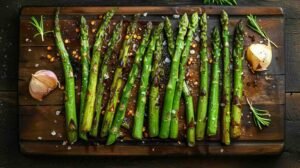Perfecting Asparagus Cooking
Importance of Properly Cooking Asparagus
Asparagus, a versatile and nutritious vegetable, is a delightful addition to any meal when cooked correctly. It’s imperative to cook asparagus properly to enhance its natural flavors and maintain its delicate texture. When I prepare asparagus, I aim to achieve a balance between tenderness and crispness, which can elevate the overall dining experience. The vegetable’s inherent earthy and slightly sweet taste can be overshadowed if it becomes too tough or mushy. Properly cooked asparagus not only offers a pleasant taste but also preserves its vibrant green color and nutrients, making it not only a treat for the palate but also a visually appealing and healthful side dish.
Common Mistakes When Cooking Asparagus
In my culinary endeavors, I’ve noticed several common mistakes that can lead to less-than-ideal asparagus dishes. Overcooking is a frequent error; asparagus should be crisp-tender, not limp. Another mistake is not trimming the woody ends, which are often tough and inedible. When cooking asparagus, uneven cooking can also occur if the spears vary significantly in thickness. It’s beneficial to use uniform spears or to adjust cooking times based on thickness to ensure even cooking. Additionally, neglecting to season asparagus can result in a bland taste, while over-seasoning can overpower the natural flavor of the vegetable.
To avoid these pitfalls, I’ve compiled various methods and tips on how can you cook asparagus? that will guide home chefs in preparing this delectable vegetable to perfection. Whether you’re boiling, roasting, or grilling asparagus, understanding the right techniques is key to achieving the best texture and flavor.
Methods for Cooking Asparagus
Asparagus, with its unique flavor and impressive nutrient profile, is a versatile vegetable that can be cooked in various ways. Whether you prefer it tender or with a bit of crunch, understanding the proper cooking methods can significantly enhance your asparagus dishes.
Boiling Asparagus
Boiling is one of the simplest methods to cook asparagus. It’s a straightforward process that involves submerging the asparagus in boiling water until it reaches your desired level of tenderness. Here’s a quick guide to boiling asparagus:
- Fill a pot with enough water to cover the asparagus and bring it to a boil.
- Add a pinch of salt to the water for flavor.
- Prepare the asparagus by washing and trimming the woody ends.
- Once the water is boiling, add the asparagus spears.
- Let them cook for 3-5 minutes depending on the thickness of the spears.
- Test for doneness with a fork; the asparagus should be tender but still slightly crisp.
- Remove the asparagus from the water and plunge them into an ice bath to halt the cooking process and preserve their bright green color.
For further details on boiling asparagus and achieving the perfect texture, check out our article on how can you cook asparagus?
Roasting Asparagus
Roasting asparagus in the oven brings out a delightful, slightly caramelized flavor that many people love. To roast asparagus:
- Preheat your oven to 425°F (220°C).
- Prepare the asparagus by washing, drying, and trimming the ends.
- Toss the asparagus with olive oil and season with salt and pepper.
- Spread the asparagus on a baking sheet in a single layer.
- Roast in the oven for 10-15 minutes, depending on the thickness of the spears.
- The asparagus should be lightly browned and tender when done.
Roasting times can vary, so keep an eye on your asparagus to prevent overcooking. For additional roasting tips, visit how can you cook asparagus?
Grilling Asparagus
Grilling asparagus adds a delicious smoky flavor and can be a great addition to your barbecue menu. Here’s how to grill asparagus:
- Preheat your grill to a medium-high heat.
- Clean the asparagus and trim the tough ends.
- Coat the asparagus lightly with olive oil and season as desired.
- Place the asparagus perpendicular to the grill grates to prevent them from falling through.
- Grill for 5-10 minutes, turning occasionally, until they have grill marks and are tender.
- Remove from the grill and serve immediately.
Remember, the key to grilling asparagus is to keep an eye on them to ensure they don’t char too much. For more grilling advice, head over to how can you cook asparagus?
Each cooking method offers a unique texture and flavor to asparagus. Whether boiled, roasted, or grilled, asparagus can be a nutritious and tasty addition to any meal. Experiment with these methods to find your favorite way to enjoy this delightful spring vegetable.
Tips for Cooking Tender Asparagus
Cooking asparagus that’s tender and full of flavor is all about the right selection, preparation, and cooking technique. Let me share some tips to help you transform this vibrant vegetable into a delightful dish.
Choosing the Right Asparagus
Selecting the right asparagus is the first step to ensuring tenderness. When I’m at the store or farmer’s market, I look for spears that are firm and have tightly closed tips. The color should be a rich green with some white or purple at the base. I avoid any spears that are limp or discolored, as these are signs of age.
Thickness is a matter of personal preference, but I find that medium spears – not too thin, not too thick – tend to be just right. They have the perfect balance of texture and flavor.
Preparing the Asparagus
Preparing asparagus properly can make all the difference. I start by washing the spears under cold water to remove any grit. Then, I trim the woody ends, which tend to be tough and fibrous. An easy way to find where the spear naturally wants to break is by bending it near the bottom until it snaps.
For an even cook, I sometimes peel the lower stalks of the spears with a vegetable peeler. This step is particularly useful for thicker asparagus and ensures that the entire spear is tender.
Cooking Time and Techniques
Asparagus can be cooked using various methods, but the key to keeping it tender is not to overcook it. Overcooking can quickly turn asparagus mushy and bitter. Here are the cooking times I follow for different methods:
| Cooking Method | Time |
|---|---|
| Boiling | 3-5 minutes |
| Steaming | 3-5 minutes |
| Roasting | 10-15 minutes at 400°F |
| Grilling | 5-10 minutes over medium heat |
I test for doneness by piercing a spear with a fork. It should be tender but still have a slight crunch. Another tip is to plunge the asparagus into ice water after cooking to stop the cooking process and preserve its bright green color.
By choosing the right asparagus, preparing it carefully, and cooking it for the correct amount of time, you can create a tender and delicious dish. For more detailed instructions on methods like boiling, roasting, or grilling, check out our extensive guide on how can you cook asparagus?
Serving and Enjoying Asparagus
Once you’ve mastered the art of cooking asparagus, serving it in a way that enhances its natural flavors and complements the rest of your meal is the next step. Asparagus is a versatile vegetable that can be seasoned, flavored, and presented in numerous ways to delight your palate.
Seasoning and Flavoring Asparagus
The key to seasoning asparagus is to enhance its naturally earthy taste without overpowering it. A simple drizzle of olive oil, a squeeze of fresh lemon juice, and a sprinkle of salt and pepper can do wonders. For those who enjoy a bit more zest, minced garlic or garlic powder can add a delightful kick. Fresh herbs such as parsley, tarragon, or chives also pair beautifully with asparagus. Here’s a quick guide to seasoning:
| Seasoning | Quantity for 1 lb of Asparagus |
|---|---|
| Olive Oil | 1 tablespoon |
| Lemon Juice | 2 teaspoons |
| Salt | 1/4 teaspoon |
| Black Pepper | 1/4 teaspoon |
| Minced Garlic | 1 clove |
| Chopped Herbs | 1 tablespoon |
Remember, these are starting points; always adjust to your taste preferences.
Pairing Asparagus with Other Ingredients
Asparagus has a flavor profile that allows it to pair well with a variety of other ingredients. It complements proteins like grilled chicken, salmon, and steak beautifully. For a vegetarian option, try pairing it with quinoa or a bean salad for a complete meal. Asparagus also works well in pasta dishes or as a side to a risotto. For a comprehensive guide on how can you cook asparagus? in different recipes, visit our dedicated section.
Presentation and Serving Suggestions
Presentation is crucial when it comes to making a dish appealing. Asparagus looks best when served whole or in long spears. Consider laying them neatly on a platter with the tips facing the same direction for a visually appealing arrangement. If you’ve grilled your asparagus, a touch of char can add both flavor and visual appeal, giving the dish a rustic look.
For a more elegant presentation, you can tie a small bundle of asparagus with a chive or thinly sliced leek. Adding a garnish, such as lemon wedges or a light sprinkle of grated Parmesan cheese, can also elevate the dish’s appearance. Remember, eating with our eyes first makes the meal even more enjoyable.
By seasoning, pairing, and presenting your asparagus thoughtfully, you can transform this simple vegetable into a standout dish. Whether you’re hosting a dinner party or simply enjoying a meal at home, these tips will help you serve asparagus that is as delightful to look at as it is to eat. For more detailed instructions on preparing asparagus for cooking, refer back to how can you cook asparagus? in our previous sections.
- Learn how to cut and cook fresh asparagus and determine whether it is better to blanch or steam asparagus



